Table of Contents
If you want to survive and succeed in today’s market, your agency needs to productize its services.
As I broke down in a previous post, I showed why traditional agency services are dying and WHY a productized approach to SEO is the way forward.
In a nutshell, here’s why:
- Monthly retainers are hard to win, provide a false sense of security, and generate almost no profit (this is the silent killer no one is talking about in our industry).
- Scaling through people is difficult. People are unpredictable, demanding, and costly.
- Traditional agency models do custom work which kills margins and produces inconsistent results for clients. This also traps the founder in operations for eternity.
If you still aren’t convinced, go read our other post here.
For those of you who are ready to scale, let’s break down our 6 step process showing you HOW to productize your agency.
This was filmed LIVE for our Blueprint members. Jump to 2:30 for the presentation to begin!
Timestamps:
2:30 – Intro
5:47 – Refine your market positioning
10:24 – Create a compelling offer
17:02 – Create a mind map for your offer
19:07 – Simplify and turn into a process
22:23 – Create a project plan template
26:23 – Document with SOPs
29:00 – Live QA
#1: Refine your market positioning
Weak positioning is a disease that kills agencies. A poor market position makes it harder to win clients, get consistent results, scale, and get out of operations for founders.
Refining your positioning is all about drilling into the “who” – a single type of client / business / vertical that you can own.
Most agencies refuse to specialize because they think it cuts off revenue streams and limits your potential.
It doesn’t. In fact, it does the opposite.
When you try and do everything for everyone, you become a jack of all trades, but a master of none.
If you want to grow, scale and succeed, you need to refine and clearly define your market positioning.
Simplify what you offer. Solve a specific problem for specific customers.
Positioning is about focusing on WHO you want to work with. It’s a process of refining, like trimming the branches of a tree so that it comes back healthier, stronger, and growing in the right direction.
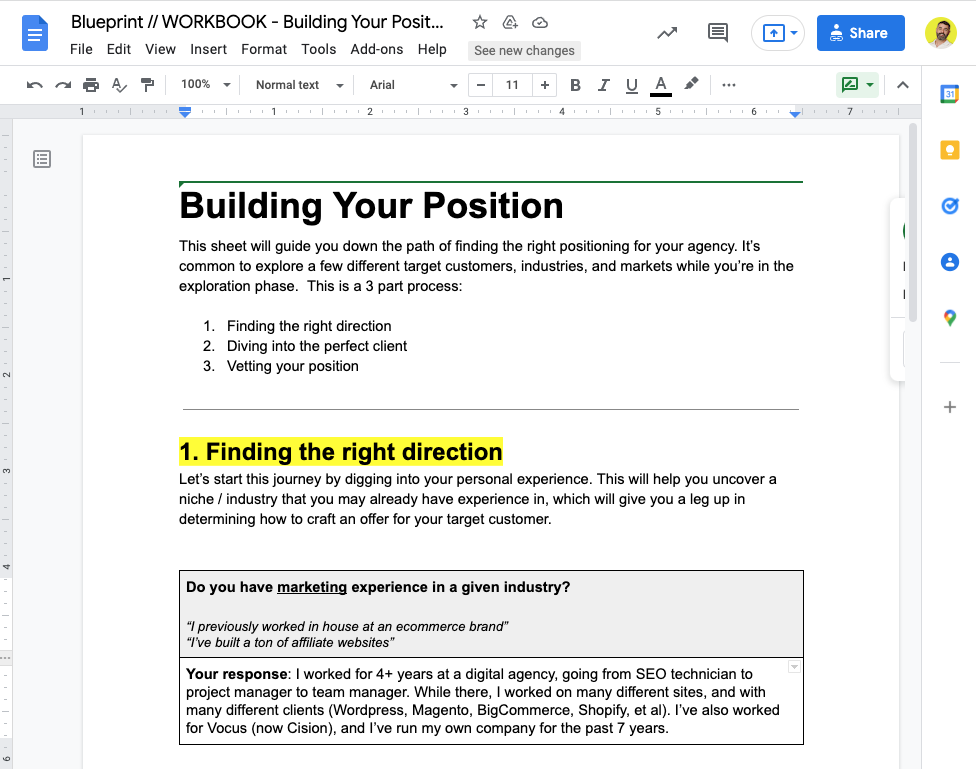
Having a stronger and clearer market position is a competitive advantage. You could focus on specific and highly profitable sectors, such as:
- B2B (Small and Mid-size)
- SaaS
- eCommerce
- Local
At WEBRIS, we refined our position to focus almost exclusively on SaaS SEO, with the SEO Sprints™ model. It took us from $25k/mo to $150k/mo in less than a year.
Rankings.io is another great example. They deliver high-impact SEO for Personal Injury Law Firms. Once they specialized, they increased MRR to $580k from 28 new clients.
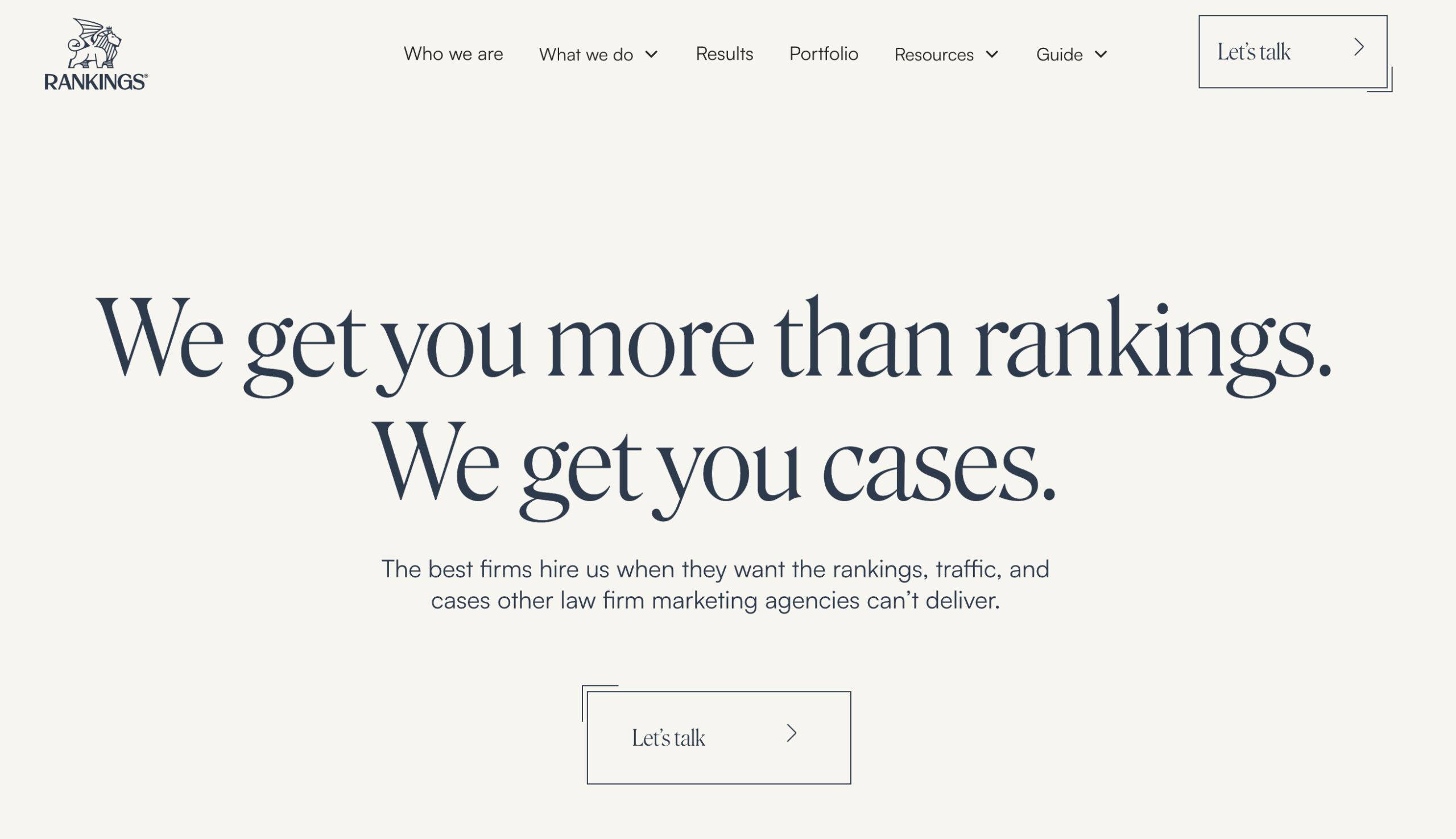
Agencies with a clear market position win more clients, enjoy less friction, get better results, and scale more effectively.
Redefining an agency’s position is the first step towards productizing services. If I’ve convinced you on market positioning, there are 4 strategies for how to select a position (which The Blueprint Training program can help you do):
- Target broad industries, especially if you’re already familiar with/have some experience in a specific sector (e.g. B2B, SaaS, eCommerce).
- Go niche. Pick a niche within a broader sector. Such as case studies for SaaS companies, or SEO/CRO for eCommerce brands, or lead generation for SEO agencies.
- Specialize your service offerings. Strip away anything non-core. Focus on one or two things you are really good at, then refine who you deliver these services for: “We deliver long-form thought leadership content marketing for SaaS businesses”
- Productize. In a “sea of sameness”, a productized service model is a unique selling point/USP.
Now you’ve defined the WHO, move onto building an offer specifically for your target market.
💡 Need more help with positioning? Take a look at our complete guide to agency positioning.
#2: Create a compelling offer that solves SPECIFIC problems for your SPECIFIC market position
72% of agencies in our Slack channel think they have a lead generation problem.
When we inspected further, it’s clear they don’t have an issue with leads – they just have a bad offer.
After you’ve defined your market position (aka the WHO), then you need to build an offer that solves a painful problem for them.
Creating an “offer” isn’t something most agencies think about.
Instead of compelling offers, clients see a “wall of whatever.” When everyone is selling the same service, there’s no compelling reason for clients to choose your agency.
If you’ve decided to focus on attorneys, that will be a different offer than if you were focused software companies or coffee shops.
❌ Your offer is not the service you provide, e.g. SEO, PR, PPC, etc.
✅ Your offer is a solution to the specific problems of your target customer.
I know this is easier said than done. But stick with me; we’ve done this for hundreds of agencies. It starts with 3 simple statements:
- Who needs this?
- What do they want?
- How do they get it?
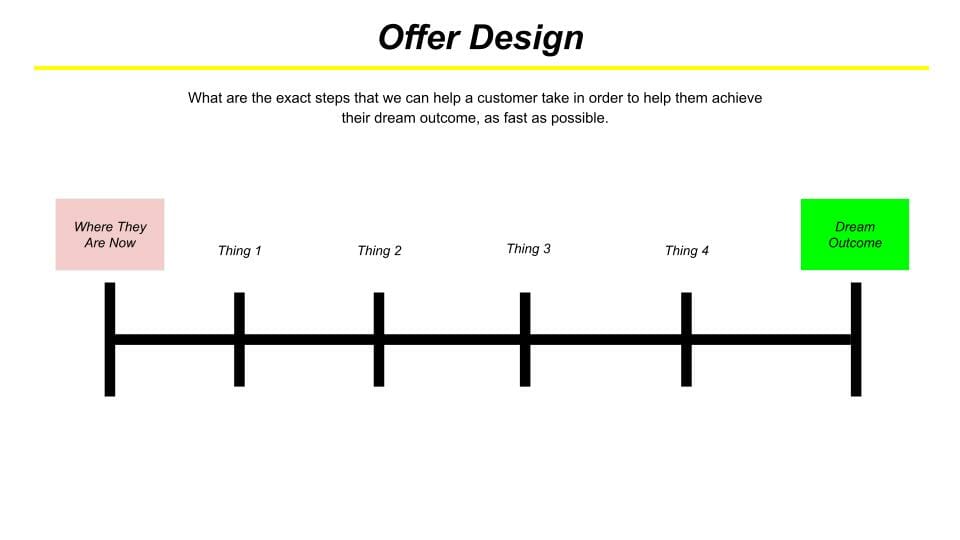
Once you can answer those questions, you can create an offer statement.
An offer statement addresses pain points specific customers are having. Problems that need solutions.

A client isn’t paying for services. A client is paying you to solve problems, such as “We need more sales leads.” They don’t want hundreds of pages of reports and weekly check-ins, they want sales leads. It’s that simple.
Let’s look at our agency WEBRIS as an example.
WEBRIS fixes SEO problems, increasing web traffic and rankings for clients with SEO Sprints™ instead of long-term retainers.
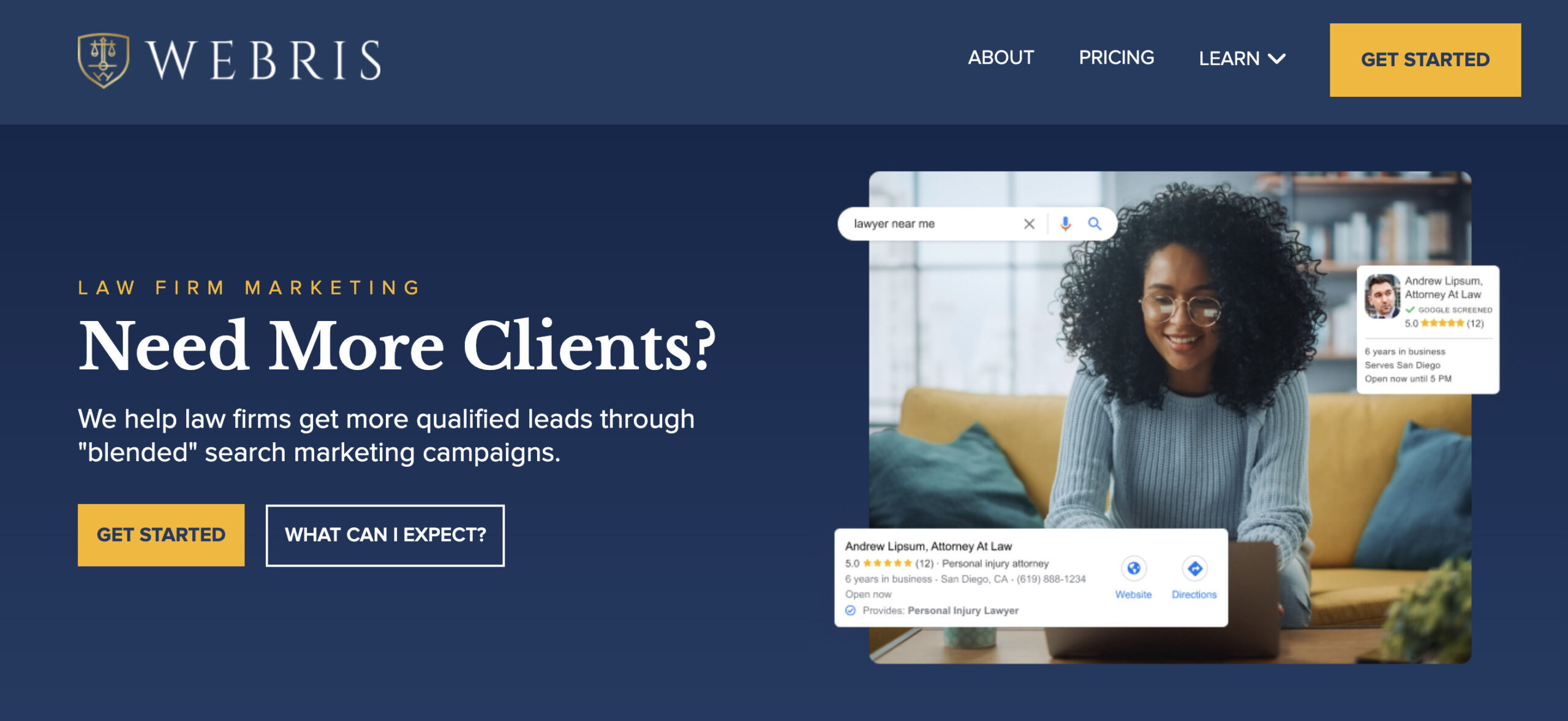
Here’s the WEBRIS offer statement:
As you can see, everything’s covered:
- Who needs this? B2B companies
- What do they want? Increase (sales) leads
- How do they get it? Short-term SEO sprints (no retainers)
As you can see, they’ve ticked all of the boxes:
- Who needs this? Personal injury law firms
- What do they want? Higher rankings, more traffic, more cases (clients)
- How do they get it? SEO (highly specialized for personal injury law firms, monthly retainers, an ROI in under 6-months)
Once you’ve got a compelling offer statement, you can map out this offer.
Here’s how I do it:
- Plot a line on a piece of paper, with two head pillars. Start at ‘Pain Point’, and on the other end, write ‘Happy Client.’
- Now identify the steps to solve that problem. These become the foundation of your streamlined, productized service offerings.
- Only focus on 3-5 roadblocks to achieve the goal of a happy client, solving key problems for them. Don’t overcomplicate it.
It really is that simple. However, if you’ve never defined a clear market position or considered creating a compelling “offer”, this will take time to work through and pick the right approach for your agency.
Once you’ve taken these steps, you can get into the details. Start with a high-level mind map of the productized service offerings.
💡 Need more help with offer design? Take a look at our complete guide to agency offer design.
#3: Mind map the entire productized offer for customers
Delivering productized services starts with a high-level mind map of what you do, and how to deliver it.
Think of it like an assembly line in a factory, or fast food joint, like McDonald’s.
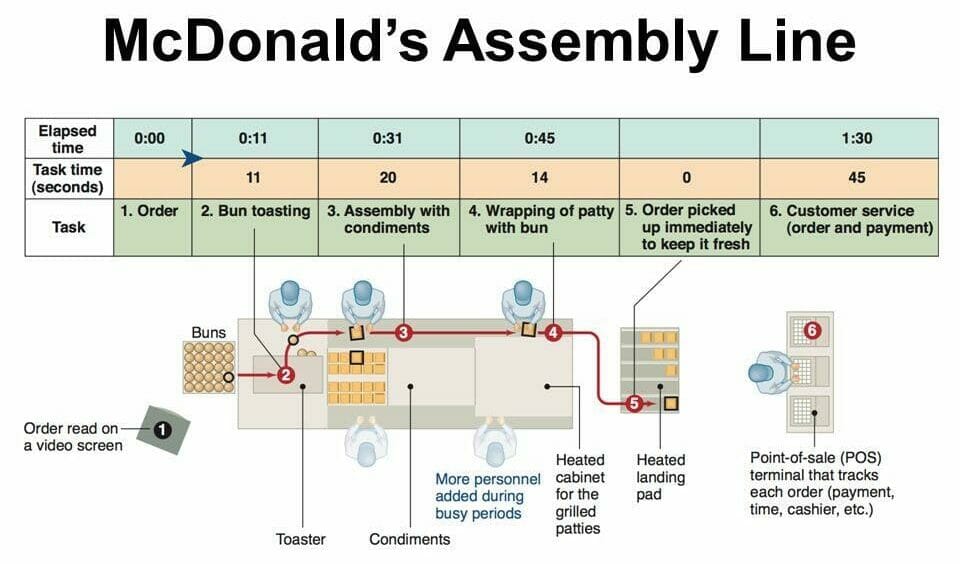
Now you need to strip the whole process down to individual components.
I use Coggle. It’s a free mind mapping tool.

Map out the high-level services, such as a “Website Quality Audit (WQA)”, or “Content Marketing”, and then break these down into individual actions/deliverables. Soon you’ll have a tree with branches, outlining every component of your core services.

Don’t over complicate or over think anything at this stage. You just need to get everything out of your head and down on paper.
When that’s done, move onto simplifying and standardizing service offerings, and creating processes.
#4: Simplify the mind map, create standardized processes
A mind map isn’t a service offering. It’s a necessary first step for creating standardized processes for delivering productized services.
You should now clearly understand everything that goes into delivering your services.
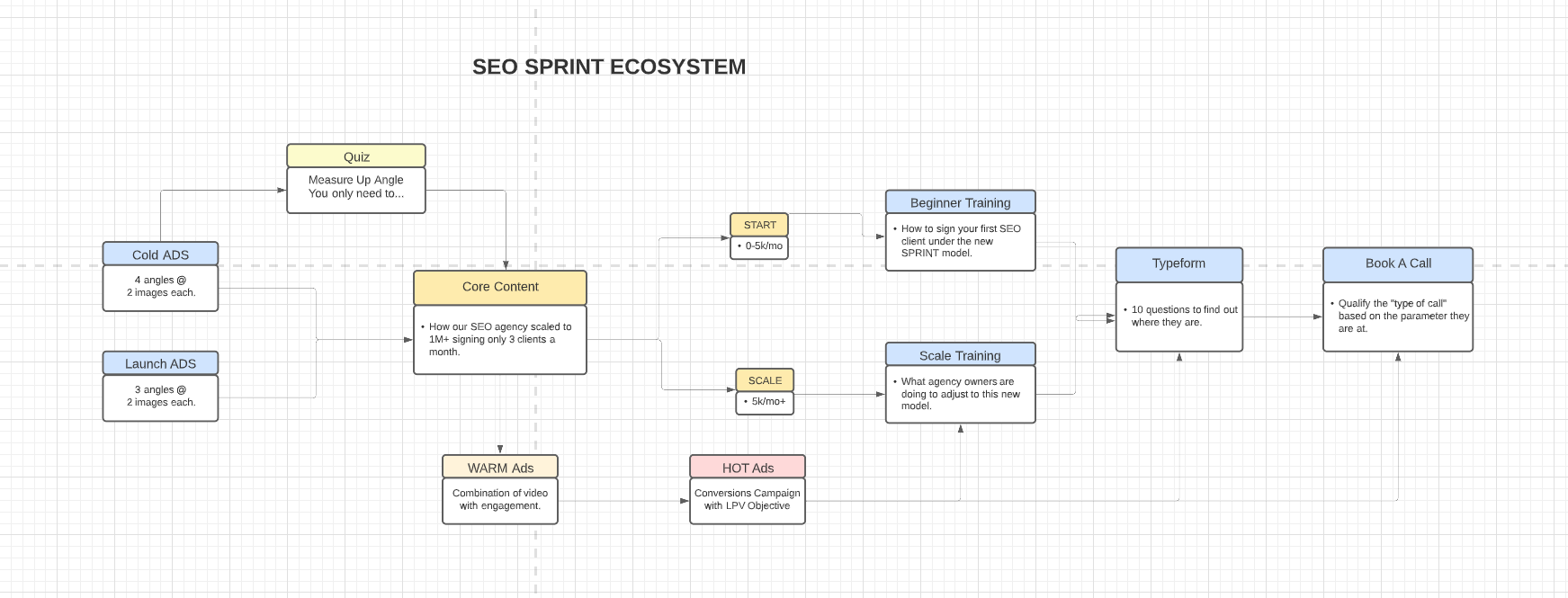
The next step is using diagramming software — I use Lucid Chart — to lay out your end-to-end processes. Doing this, you are asking and answering:
- What are we delivering?
- Why are we doing this?
- How do we deliver this?
- Is this [service/deliverable X] adding value for clients?
You might find there are deliverables that you either don’t need or could be built out as stand-alone offerings. Dump anything that doesn’t make sense. That doesn’t add value.
Simplify and standardize the whole end-to-end process.
If you are delivering similar services for different types of clients (e.g. SaaS and eCommerce), then each will need its own service delivery process map.
When you are mapping this out and simplifying the mind map, you need to stay focused on solving specific problems for clients.
Clients can see value more clearly when problems they’ve had for a while are being solved. It’s also easier to start charging more when the impact-value of your services increases.
Now you can create a unified project plan around these services, and the SOPs (standard operating procedures) required to deliver them.
#5: Turn standardized processes into a unified project plan
If you’ve come this far, you are really getting some traction on turning tailored agency services into a productized agency model.
With everything mapped out, you can start to create a unified project plan. A clear, repeatable way to deliver services at scale, for the same clients, over and over again.
Remember, keep it simple. Don’t overcomplicate it. Don’t be tempted to go back and throw in services you used to deliver.
Use a simple project plan formula (the same one we use at WEBRIS, based on The Blueprint Training program).
- Include the specific steps that need to be taken to deliver these productized services
- Once you know exactly what needs doing, you can start to assign who is responsible
- Don’t overcomplicate this, either. Staffing is simpler when services are productized.
- We assign one person to execute that service for every function/deliverable within the WEBRIS model. It’s that simple.
Here’s our streamlined staffing model. It took us from 5 to 3 roles internally (with other roles to execute sales, marketing, and we outsource link building):
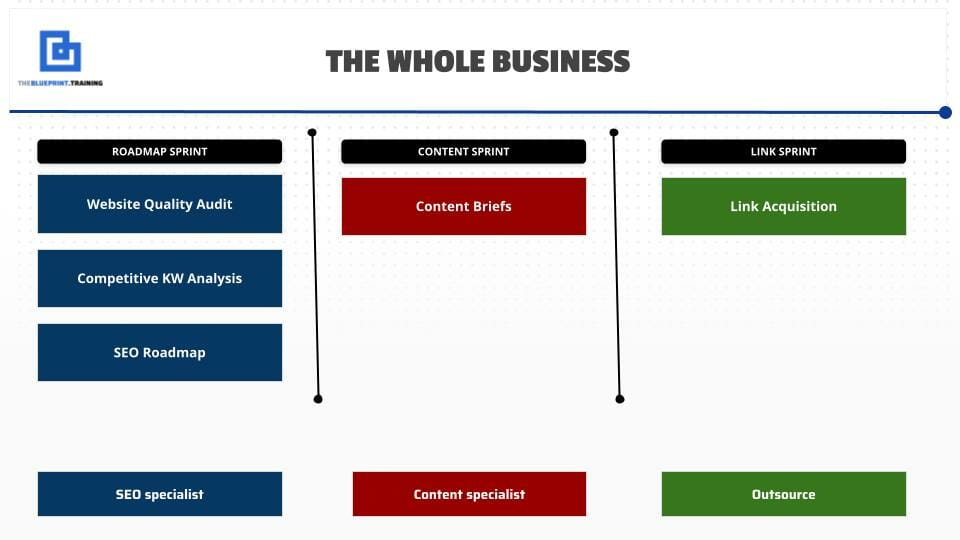
We use Google Sheets for our project plan. Create a template, and then copy that template for every new client. Make it a clear, straightforward, chronological process.
Set due dates according to what you discuss with clients — within the scope of work — so they know when to expect deliverables, calls, and reporting.
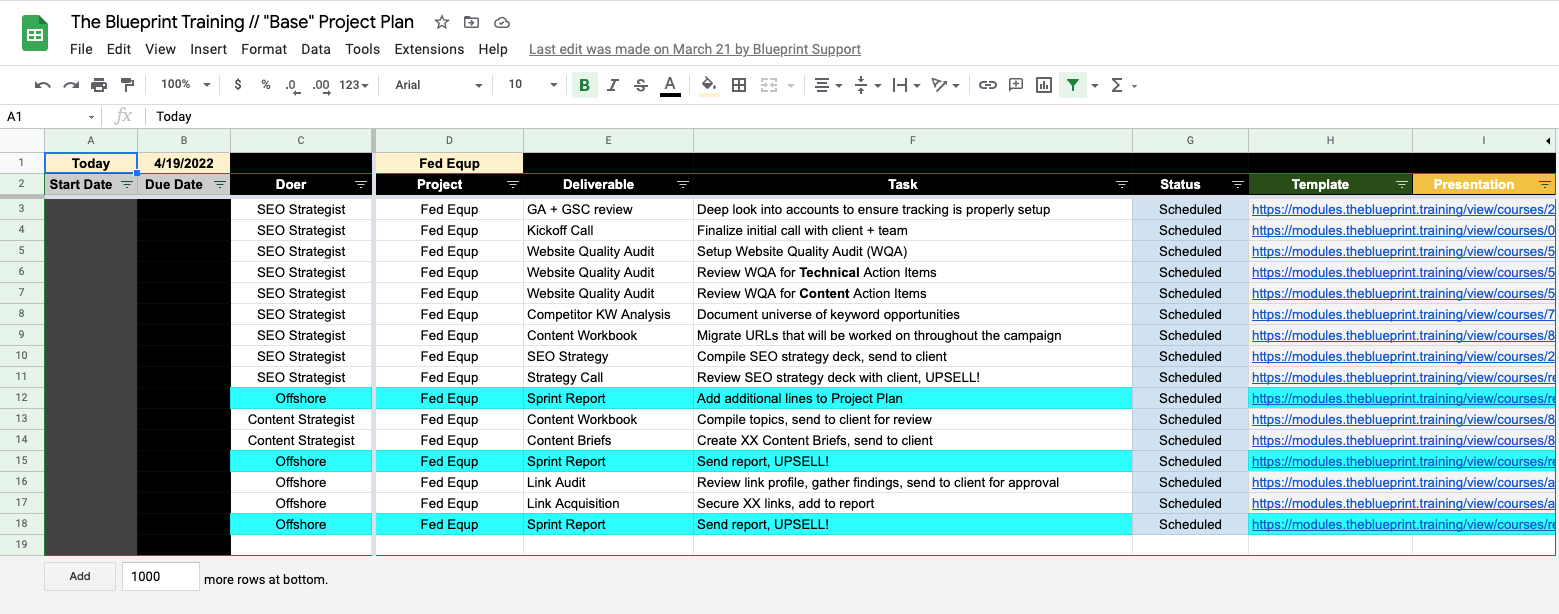
This Google Sheet contains tabs for the client name, deliverable, task(s), due dates, who’s responsible, a template for delivering the service, and training. More on training and SOPs below.
As you scale, the staff originally responsible for executing the work (the doers), can move up and become reviewers. Using SOPs and training manuals, new doers can be trained by reviewers, and they can transition into managerial roles.
#6: Document the whole process with Step-by-Step SOPs
Now you’ve got a project plan, you need to make this scalable and repeatable. SOPs are the only route out of operations.
You can start to take yourself out of client work, but only when you’ve documented every process with step-by-step Standard Operating Procedures (SOPs). Here’s how you do that:
- Document every deliverable. Scope it out in a comprehensive document;
- Record videos in Loom of every action staff need to take to execute tasks and deliverables for clients
- Include software links and logins in these documents;
- Work with a writer, managers, or team members to refine and add clarity to each SOP;
- Link out to templates and other internal and client-facing documents staff need to use to execute the work;
- Think of these as working documents. Encourage and empower staff to update them;
- Adapt SOPs to client project realities and any external factors, such as the impact of algorithm updates.
SOPs start with a brain dump. As a founder, you should know how every project/deliverable is executed. But have you ever documented this?
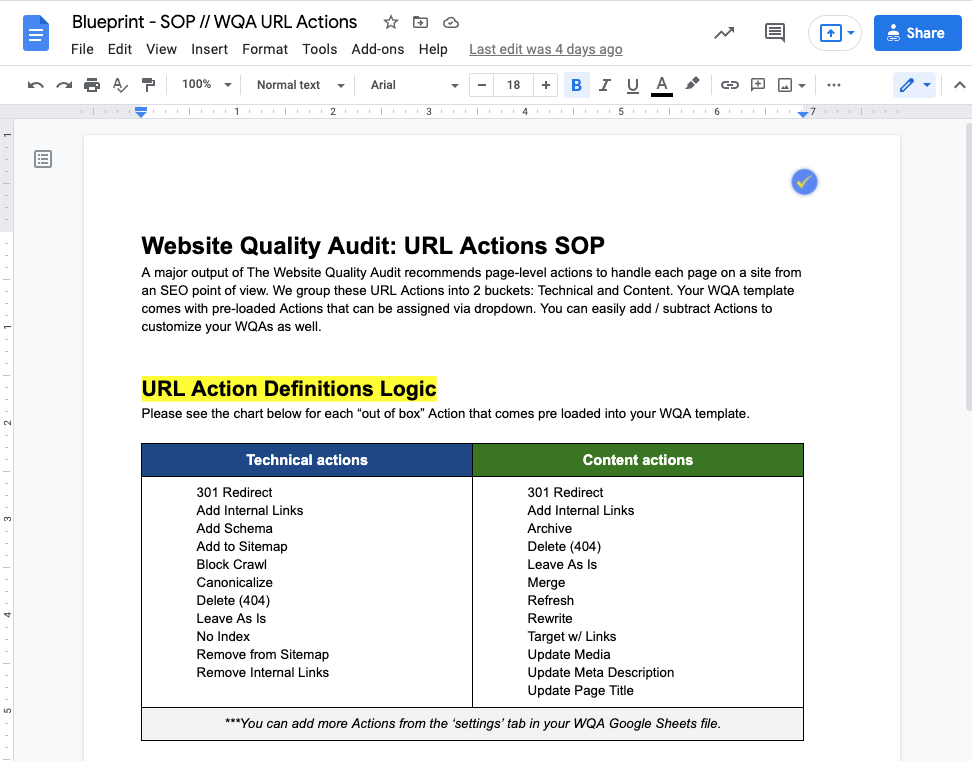
Probably not. Agencies never have time to document anything.
It’s one of the reasons founders stay stuck in operations. If it’s not in your head, you need to figure out new approaches for new clients. It’s impossible to train staff and scale up without SOPs.
SOPs are integral to the training process. At WEBRIS, we have 30, 60 and 90-day training sprints. Having set processes ensures founders can start to play a leadership, training, feedback, and coaching role.
At the end of these training cycles, we expect new team members to take ownership of the SOP. This way, they can train and lead new hires once time tracking shows they are approaching capacity.
SOPs give staff a solid framework. Give them the tools they need to do the work. Empower and encourage them; trust them to execute and deliver. Guide them when mistakes are made, and watch your agency scale while your input gradually reduces.
And there we go. That’s the steps you need to take to transform a custom service-based agency into a scalable, productized SEO agency.
Key Takeaways
- Redefine and refine your market positioning
- Create a compelling offer, solving specific problems for specific clients
- Mind map the entire productized service offering
- Simplify the mind map, create standardized processes
- Turn standardized processes into a unified project plan
- Document the whole process with step-by-step SOPs
Are you ready to become a productized SEO agency?
We can help you do that. Sign up for The Blueprint Training and get instant access to our entire training suite teaching you exactly how to productize your agency.